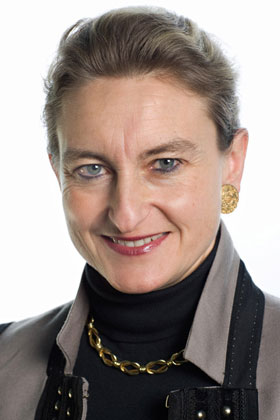
Telkom has begun a multibillion-rand network upgrade to improve the performance of broadband infrastructure and even to support fibre to the home eventually, but with fears uptake might be slow, could streaming video services provide the impetus to drive demand?
Gabrielle Gauthey, executive vice-president of public affairs at Alcatel-Lucent, says when France began rolling out high-speed fixed broadband lines, one of the main drivers of service uptake from consumers was Internet protocol television, or IPTV for short, where video content is streamed on demand over broadband connections.
She says consumers in France were offered fixed-line Internet, voice-over-IP services and more than 150 IPTV channels for roughly E30/month and that this created “massive demand”.
“It forced the rapid roll-out of broadband networks across France. Now, 97% of the population has access to fixed-line Internet and, of those, 75% make use of IPTV.”
As part of its plan to overhaul its legacy copper-based access network, Telkom is building as many as 3 700 multi-service access nodes (MSANs), which will replace the digital subscriber line access multiplexers that deliver broadband to residential consumers and businesses today.
These MSANs will offer both improved access speeds over existing copper infrastructure and support fibre-optic access, too. But there are concerns that there may be insufficient demand at first for fibre services, particularly from consumers, due to anticipated high costs, and this could hamper roll-out.
Gauthey says Telkom must modernise and help SA to reach its developmental goals. With Telkom talking about increasing line speeds to between 20Mbit/s and 40Mbit/s in coming years, IPTV may indeed be on the cards, and may help to mitigate the risk for the operator.
Indeed, Telkom executive Steven White said in an interview with TechCentral last year that it was in talks to launch IPTV products on its broadband network.
Gauthey says African countries recognise the need for increased spending on technology infrastructure to drive social and economic development. She says a large number are developing national broadband plans. “Governments are stepping back in because the pace and rhythm of private-sector investment seems too slow for their aims.”
Mobile important, too
Gauthey says countries such as Kenya are allocating the digital dividend bands – the spectrum freed through the migration from analogue to digital broadcasting — for mobile broadband. “They’re called ‘golden bands’ because networks operating in these bands cost approximately seven times less to build than those over 2,5GHz.”
Allocating spectrum is crucial and in Kenya and elsewhere it’s been deemed an “essential asset” and has been put at the disposal of all operators united in a consortium or wholesale model. “The government is saying that if they allocated spectrum via auction, while it might make the most money for the budget, it won’t get the government what it wants, which is rapid coverage of the countryside rather than the duplication of urban networks.”
Some governments are contemplating allocating spectrum using special-purpose vehicles that will use public buildings to facilitate the roll-out by reducing the need for site permissions for infrastructure.
“Government is bringing the backhaul, site authorisation and spectrum together.”
Gauthey suggests this model could work in a country like SA and that other countries in Africa and South America are considering it.
She says fibre networks are essential for long-term evolution, the next-generation mobile broadband technology. — (c) 2012 NewsCentral Media




